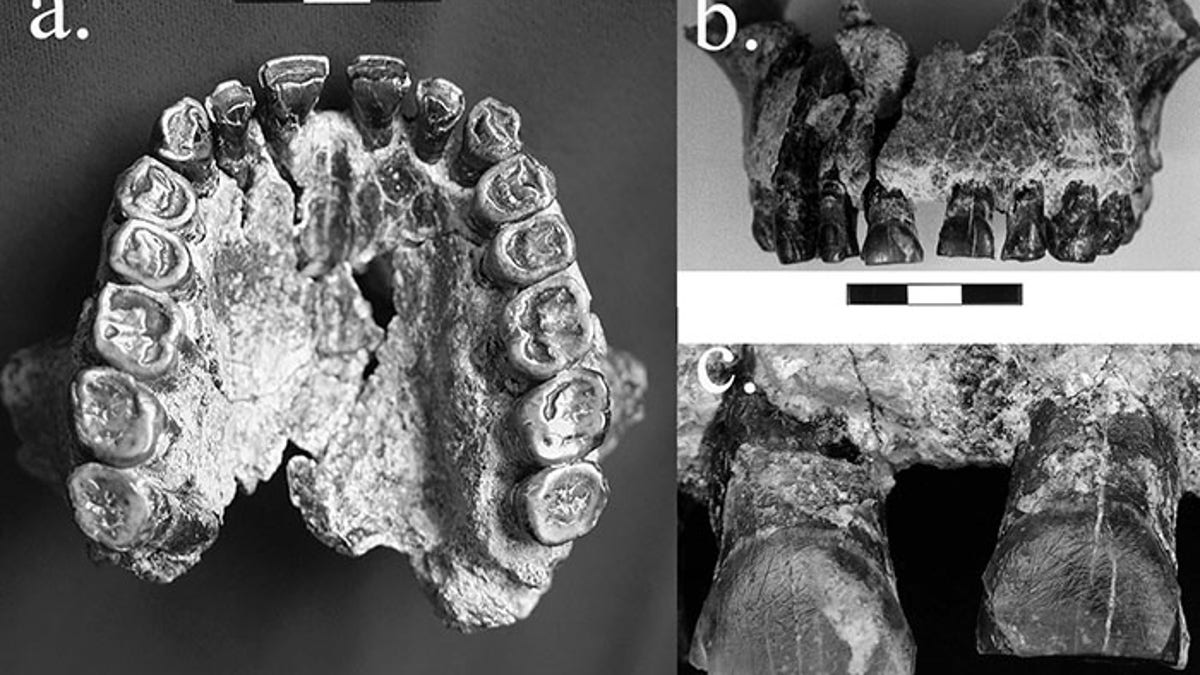
(University of Kansas)
A lot has changed over 1.8 million years, but perhaps not the tendency of hominids to favor their right hand. An upper jawbone belonging to a human relative who lived in what is now Tanzania almost 2 million years ago has been discovered with scratches on its still-intact teeth, and scientists have a clear idea about how they were made: by a stone tool held in the Homo habilis individual's right hand.
Why is that significant? Well, it represents the earliest known evidence of right-handedness among human relatives. The next oldest comes from the 500,000-year-old teeth of a Homo heidelbergensis individual, per National Geographic.
Related: Scared of Spiders? You Will Be After Seeing This One
Evidence also suggests Neanderthals were predominantly right-handed. In the case of Homo habilis, archaeologists think the teeth nicks came about thusly: The individual would have a piece of meat clenched in his teeth, and while he stretched it out with one hand, he used the other, dominant, hand, to cut it with a stone, explains Live Science.
(It provides a graphic of what this looks like.) Occasionally, the stone would slip, and the direction of the resulting nicks suggests the right hand was the one used, a theory backed up in modern experiments.
Related: Scientists Studying Sea Levels Stumble on 'Astonishing' Graveyard
Few studies have analyzed Homo habilis teeth for such marks, but study author David Frayer of the University of Kansas hopes his research will encourage others to do just that.
The discovery may also offer insights about when language first appeared since "language, handedness, brain laterality ... are all interrelated," he tells Mashable. (This is the oldest evidence of human cancer.)
This article originally appeared on Newser: Meet the World's Oldest Known Righty
